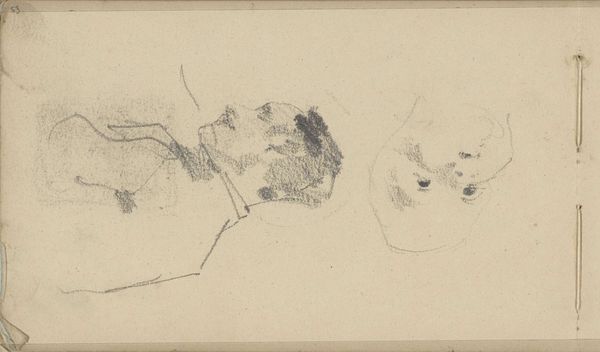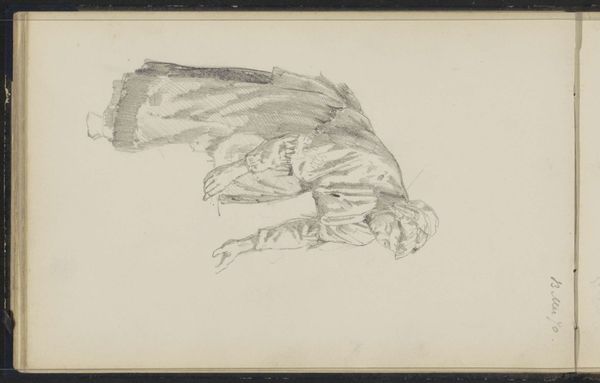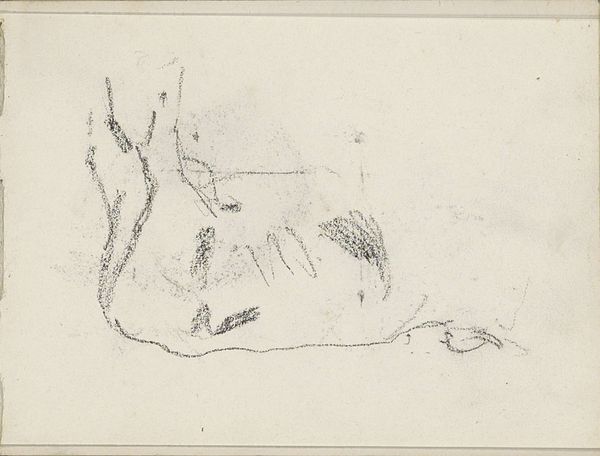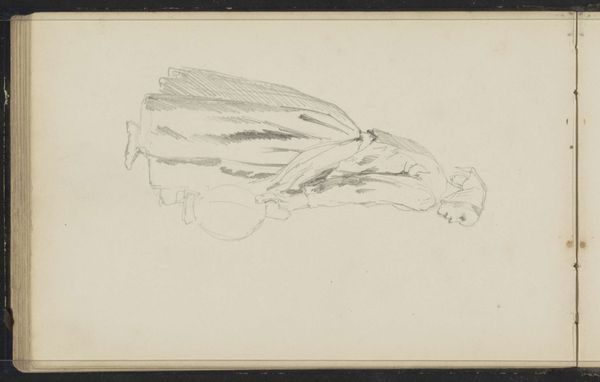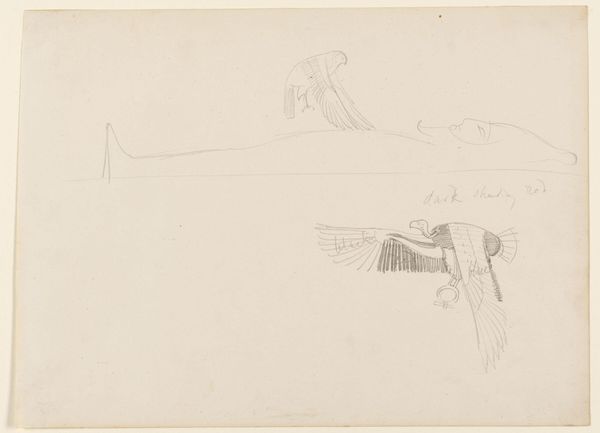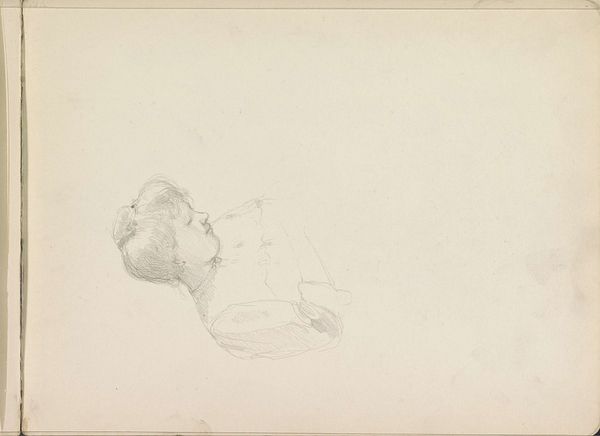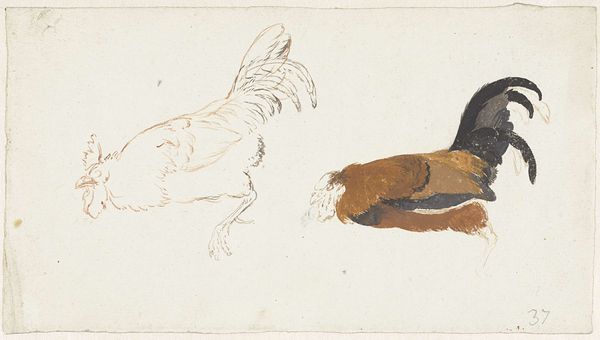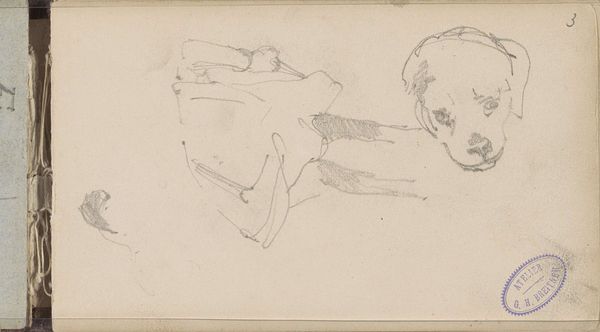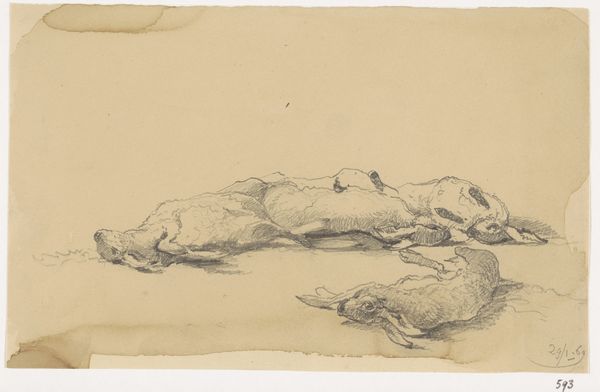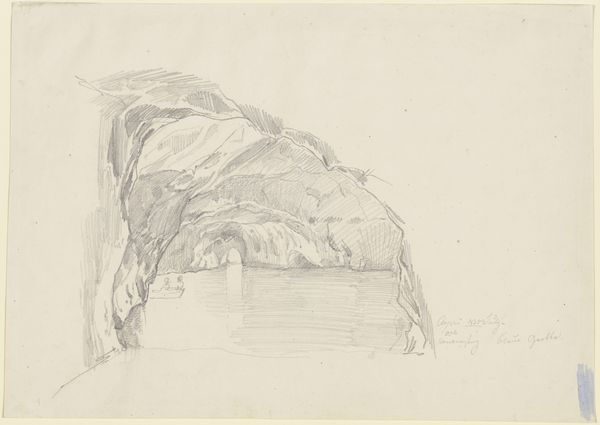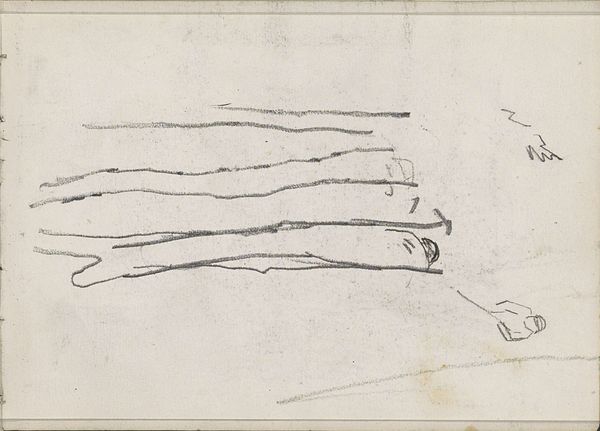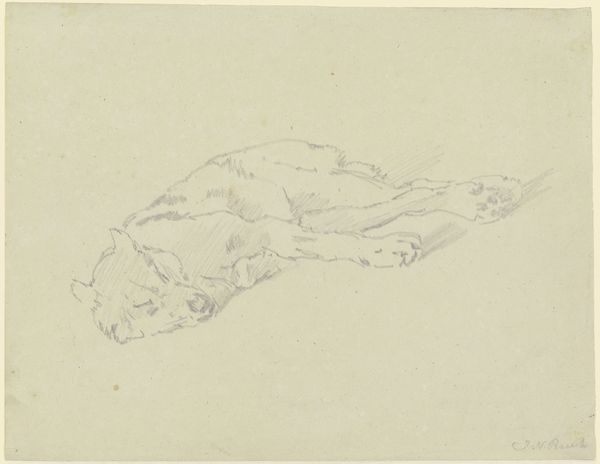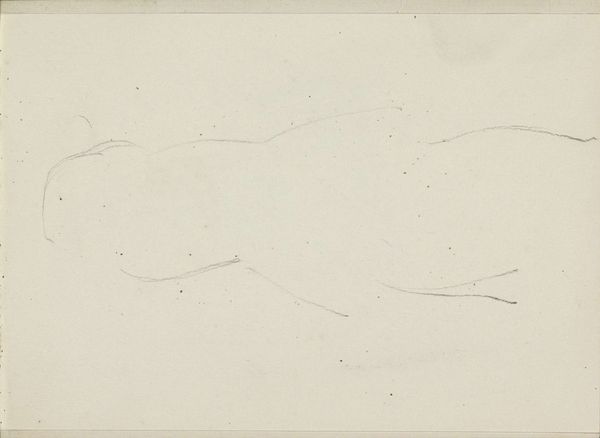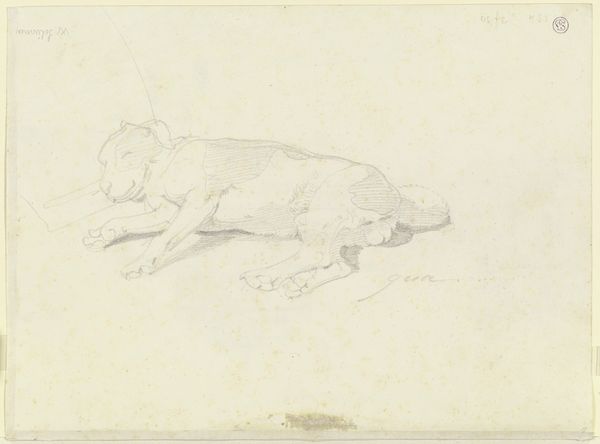
drawing, watercolor, pencil
#
drawing
#
pencil sketch
#
landscape
#
watercolor
#
pencil
#
watercolor
#
realism
Copyright: Rijks Museum: Open Domain
Editor: Here we have "Twee boomstammen" or "Two Tree Trunks," created sometime between 1828 and 1897 by Adrianus Eversen, using pencil and watercolor. The subdued palette and the rather direct presentation give it a feeling of quiet observation, almost clinical in its detail. What do you see in this piece beyond that initial impression? Curator: This drawing speaks to the intersection of art and resource extraction. By isolating these tree trunks, Eversen inadvertently highlights our complicated relationship with nature. Consider the historical context: this was a period of intense industrial expansion across Europe. What impact did deforestation have on marginalized communities during this era, particularly concerning resource allocation and displacement? Editor: So you're saying the drawing isn't just a benign nature study? Curator: Not entirely. Look at the deliberate rendering; even in its unfinished state, it suggests an intention beyond pure aesthetic appreciation. The almost scientific scrutiny, particularly around the cut ends of the logs, evokes a sense of evaluation—assessing the value, the potential yield of these natural resources. How might this connect to evolving societal attitudes towards environmentalism, even in its nascent form? Editor: That makes me see it in a new light. I initially missed any of that context, but now I can't unsee it! Thanks for shedding light on how historical and political factors subtly influence seemingly simple landscape sketches. Curator: Precisely! By examining art through the lens of its time, we uncover powerful narratives about social values and their complex manifestations. It's never just "about" the logs.
Comments
No comments
Be the first to comment and join the conversation on the ultimate creative platform.
